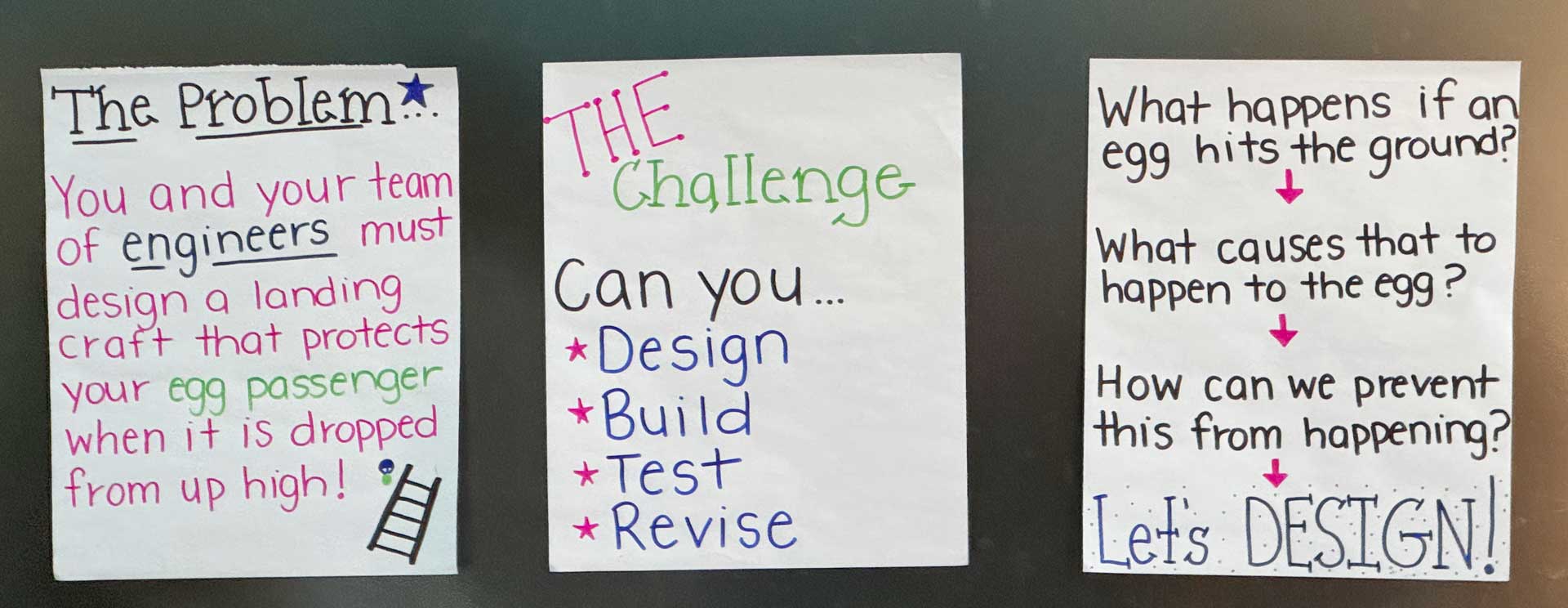The Hands-on Classroom: Empowering Teachers and Students to Take the Wheel for Authentic Learning
A Visit with STEM Resource Teacher, Seedlings Alum and Milken Award Honoree Alyssa Granata-Basso
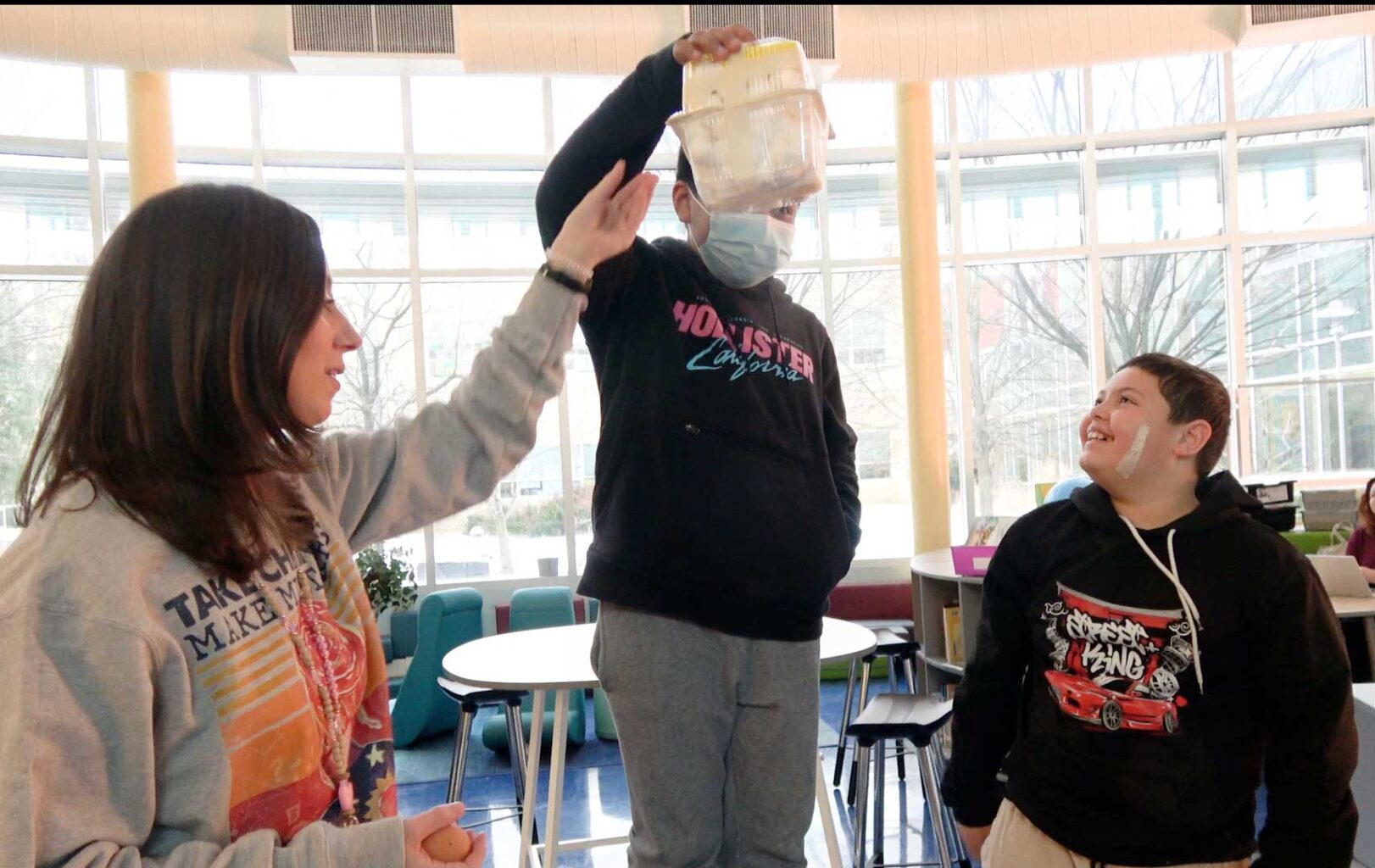
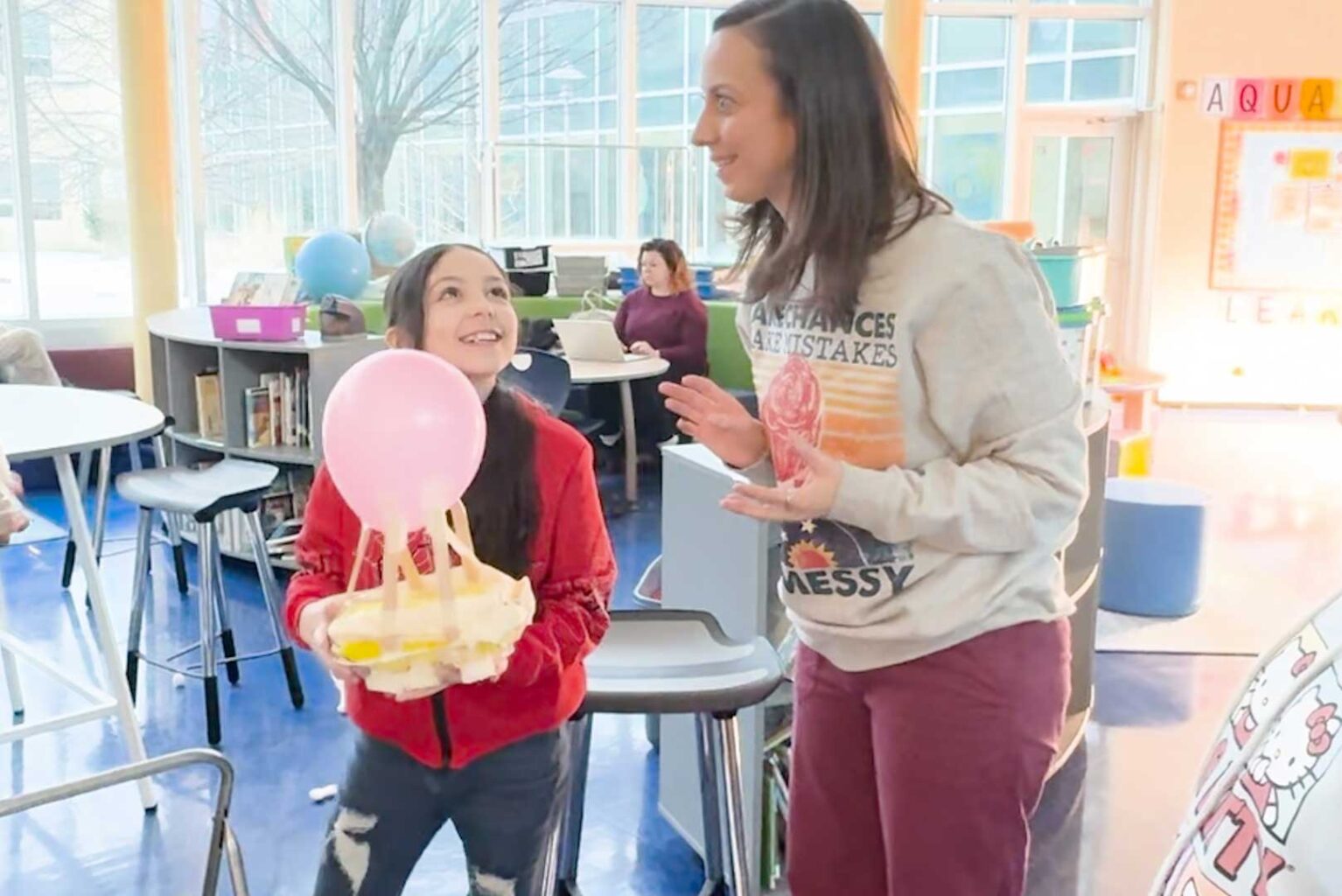
Seedlings visited John S. Martinez Sea and Sky STEM Magnet School (New Haven, Conn.) to talk with STEM resource teacher Alyssa Granata-Basso and observe one of her STEM challenge classes in action. We talked with the Milken award winner about her love of teaching, the importance of hands-on student-driven learning, and how she continues to grow, among other things.
An Engaged Class
Alyssa’s classroom is abuzz, with fifth-grade students donning their engineering caps to solve a problem: how to help Mrs. Basso’s friend “Eggbert” (as Alyssa has dubbed the dozen eggs participating in the challenge) land safely, after falling through the air. Alyssa is Martinez’s STEM resource teacher, AV teacher and student council co-advisor. Her enthusiasm is contagious and, as the students design their egg carriers to help protect Eggbert from his six-foot freefall, there a lot of “ooh-ooh…what about if we try this?” and “wait, I think I have a better way” conversations among the students. Words like “gravity,” “impact,” “force,” and “shock absorption” easily flow in the students’ discussions as the design process turns into building, testing, re-engineering, and the final test drop and ensuing discussion.
For this challenge, “It’s the process that matters,” Alyssa explains. “There are times when product is what we’re looking for and that’s when we will want to preserve it. In this case, I’m trying to teach them that this was far more about the learning that took place, the teamwork, the collaboration, the problem solving and engineering skills—not necessarily this end product.” It can be a hard concept for students to grasp since schools often prioritize tangible results like papers, grades, and testing scores. “Do we get a treat?” asked one student from a particularly-engaged group of students who stayed after class to test their egg-traveling prototype with more passengers. Alyssa responded, “So you want to know what the treat is? How do you feel inside right now?” The students responded, “Happy.” “Yeah. You feel good, right? That’s the only treat you need. You’re successful and it feels good.”
A Bit about John S. Martinez STEM Magnet School
Martinez is a K-8 school that emphasizes a student-driven, hands-on approach to learning. When Alyssa was asked by Martinez principal Luis Menacho to help the school transition to a STEM school, she jumped at the chance. “It was an exciting possibility to be part of, where you’re literally changing the entire culture of a school. You’re changing the way in which kids learn for an entire building. It’s perfectly aligned with my personal pedagogy.”
The mission of Martinez is to provide a student-led approach to learning through inquiry and the authentic acquisition of knowledge. Students not only learn this way in Mrs. Basso’s STEM challenge opportunities, but in all their classrooms. “We’re embracing that approach, and we are rolling with it. My colleagues are teaching in their classroom according to what they feel is right for their students. If there is a skill that they’re noticing that kids are not getting, they may need to explicitly teach it–and that’s okay. Again, we’re doing what feels right and what our kids need to learn.”
While Alyssa emphasizes that nothing and nowhere is perfect, the school ethos not only values engaged, student-driven learning, but also engaged teaching where educators are empowered. It makes for a creative, inspiring, and—dare we say–fun educational environment where education is “top quality with high expectations” for student outcomes.
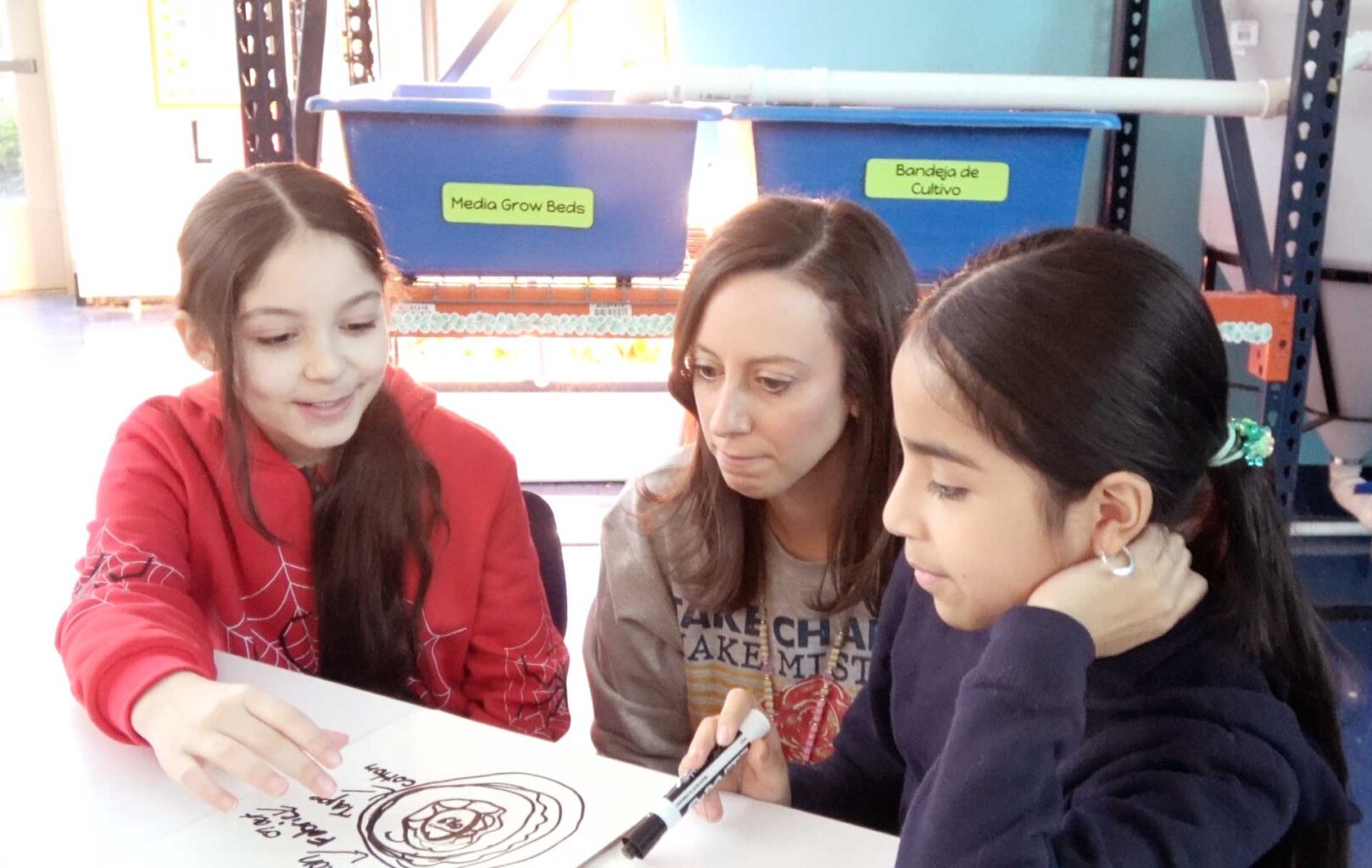
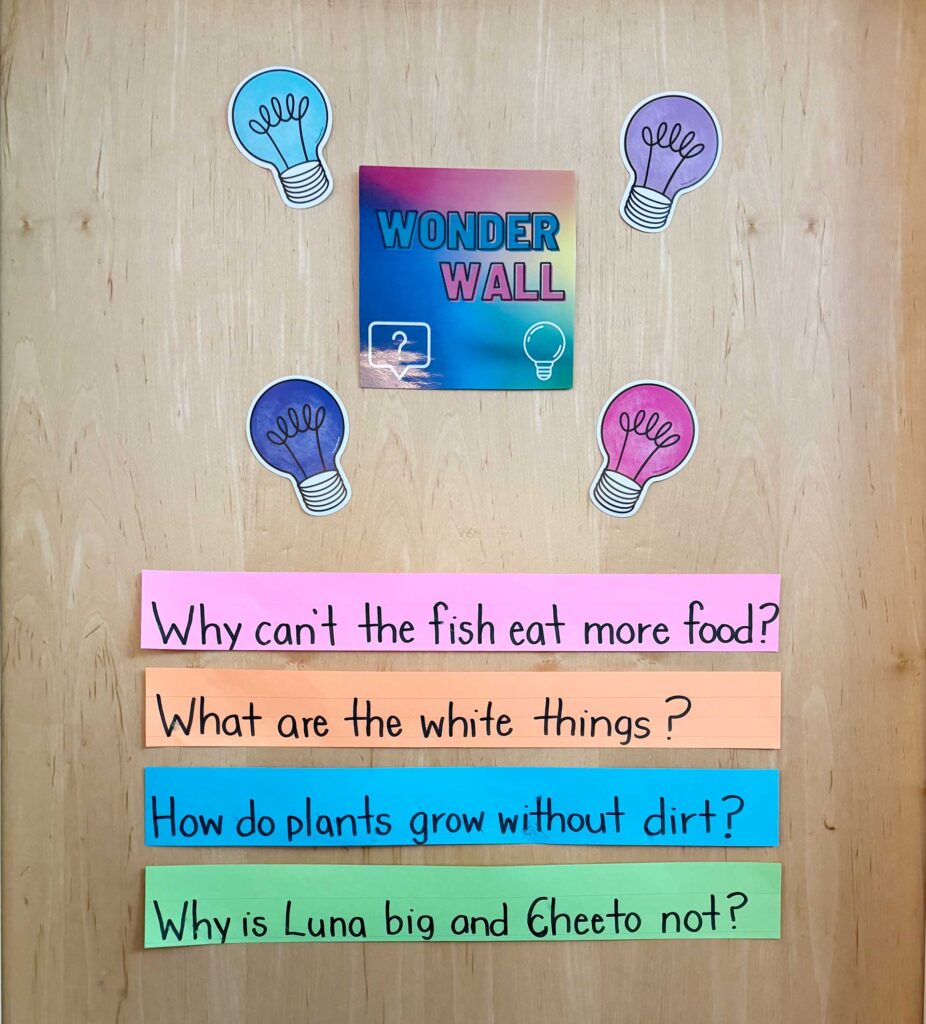
What helps Alyssa maintain her energy and enthusiasm?
Mostly, it’s the kids. Yet, there’s more to it. As we talked, it became clear that just as her excitement for learning is contagious for her students, it may be for fellow teachers. So, here are some takeaways if you’re looking for some inspiration:
-
Build positive relationships with students.
“So, as cliche as this is going to sound, the kids really do provide you with a really great support system when you've built relationships with them. I work very hard to make sure the kids know that I'm fully invested in them, and hopefully that means that they'll then be fully invested in me.” Those solid relationships not only make for great support and inspiration, but Alyssa also attributes them to running her classes seamlessly. “Building those relationships really, really works because what you notice is that [negative] behaviors become very minimized because they respect you and you respect them. We have this mutual understanding that we're in this together.”
Strong teacher-student relationships don’t happen overnight. As educators, we know it takes some time at the beginning of the year to build the report and trust, particularly when a teacher is new to a school and is yet to be a familiar presence in the school. “I've been here for a while now so everybody knows who I am and I get a lot of support from the kids. That makes my job a million times easier because I'm not worried about any behavioral issues. I know that they've got my back, and I've got theirs. So now, we're here to just have fun and learn together.” -
Embrace collaboration with colleagues.
It’s not a coincidence that the students were talking about concepts like gravity and Newton’s Laws during the egg drop challenge; they already had the vocabulary and background knowledge from their science teacher ready to apply in Basso’s classroom. “It's a team effort. I need to know what the teachers are doing in their classrooms and vice versa. So we're very, very collaborative,” she says.
The STEM challenges and other learning opportunities in Alyssa’s classroom are carefully planned to include next-generation science and engineering standards and coordinate with the school’s curricular themes. “I believe in interdisciplinary learning and in the transfer of knowledge. The more opportunities that kids have to delve into this content, develop these skills, and explore these concepts in a very interdisciplinary approach, the more apt they are to care, get excited about the learning, be engaged in the learning, and also retain the learning.”
At Martinez, collaboration and teamwork are modeled at every level, including administration. “My leadership team is phenomenal. We have our principal, our assistant principal, our literacy coach, our math coach, our guidance counselor and our leadership team that we make up together. They're so unbelievably supportive of all these initiatives and partnerships and all of our hard work. Everybody's willing to roll up their sleeves and really do it together.”
Because school leadership trusts in the process of supporting both student and teacher curiosity and initiative, even the most seemingly “outlandish” asks from Martinez educators get considered and thought out by the team. When Alyssa floated a proposal to purchase a $10,000 green screen area for her AV classes to create their own videos and podcasts, the response was not “no,” but “What do we need to do it?” “They're great about saying like, ‘Okay, to feasibly make this happen, we're going to work together to figure out the logistics and how we're going to do this.’”
As any teacher can attest, feeling supported by leadership and your fellow educators makes a world of difference for everything from your own wellbeing and professional growth to student learning and behavior. Alyssa emphasizes: “Knowing that your school's got your back—that they’ll say ‘We're going to be here to support you in whatever way we can, as long as it's feasible and it's safe’—is huge, you know?” -
Stay curious.
People of all ages benefit from frequent opportunities to learn through exploring their curiosities and interests in a safe environment—and it’s particularly essential to foster that space for students and teachers alike. Curiosity is one of the elements that help grow learners and promote life-long learners, and let’s face It, when you’re encouraged to be curious, it also makes learning (and teaching) more interesting and fun. “I am a really curious person, so I question everything and I want to know more about everything,” Alyssa says. “I think we have a culture in the building that promotes people being curious, having passions and exploring them. Giving my students a forum in which they can question the world around them in a very safe space where there are no rights, there are no wrongs, and you’re free to make mistakes is so important. Get as messy as you like--it's all good. We'll clean it up. This keeps me coming back every single day because we have fun. Above and beyond, I know I'm teaching them things, but we're having so much fun together, learning.”
-
Infuse play-based learning into everyday instruction.
This is your reminder that learning can be fun for both students and teachers, and still meet—and often exceed—stand standards and school curriculums. Playful learning—and instruction— offers the opportunity to make concepts more meaningful and relevant to students. In the egg drop challenge, Alyssa’s students were taking part in playful learning. “I could stand up and tell them a bunch of fancy jargon that they’re already learning in science class, but I'd rather they organically start to discover some of those concepts on their own. It's actually very structured, play-based engineering and learning.” It’s important to note, again, that Martinez students are also doing variations of playful, student-driven learning in their regular classrooms, as well.
All of Martinez’s K-8 classrooms have had the opportunity to participate in the egg drop challenge (every challenge is open to all classrooms), and students from each grade take away different concepts, based on prior knowledge and their developmental level. Alyssa elaborates, “Saying something like, ‘We have to slow down the fall,’ is something that my first graders might not have thought of, but the fifth graders did because they knew about force and motion. It's cool to see the intrinsic differentiations.”
-
Find opportunities for professional growth.
Alyssa was a self-contained classroom teacher when Martinez principal Luis Menacho reached out to her with the opportunity to help transition the school to a STEM magnet school. She and Menacho had worked together before; in fact, he gave Alyssa her first teaching job (along with the other principal and assistant principal). “One of the reasons I jumped on the offer was because I did feel very stagnant. I felt very burnt out. I've always loved teaching and I hope I always will, but I felt like I wasn’t growing. I was thinking, ‘I've taught reading. I've taught writing. I’ve taught math. I’ve taught science. I’ve taught all of it,’ I just felt like there wasn't any opportunity for me to grow as an educator in that capacity.”
While taking on the job was daunting in that she wasn’t sure if she’d be good at shaping the schools STEM program since she hadn’t done anything like it before, Alyssa decided to trust Menacho’s faith in her abilities. “I'm thankful I did because I don't think I would have grown if I had stayed where I was comfortable. I had to break outside of my comfort zone.” She credits Menacho as “one of the biggest factors in my own personal growth because he has always given me the trust and the autonomy to do what I love and do it in the way that I love. I don't think I would have thrived. I don't think I would have grown as much without the support of people like him.”
To keep growing both personally and professionally, Alyssa looks for ways to challenge herself. “I feel like once you reach that point of burnout or you feel like things are stagnant, it's not good for the kids anymore. You're not effective anymore. So that's when you got to push yourself beyond the boundaries.” Her growth mindset, enjoyment of learning and passion for teaching has Alyssa constantly looking for more ways to be involved in her school. In addition to teaching STEM challenges and AV class, she is a co-advisor for student council and is working to develop more opportunities for outdoor learning and community connections for the school.
Basso’s dedication to her own professional development, her school and her students caught the attention of the Milken Family Foundation who honored her with their Milken Educator Award. Often dubbed “the Oscars of teaching,” the Milken recognizes and honors outstanding educators across the United States with $25,000 unrestricted awards. For someone who prefers to stay out of the spotlight, the acknowledgement was an overwhelming surprise when first announced at a school-wide assembly. “Teaching is pure joy. This is literally the only thing I've ever wanted to do my entire life--and somebody thinks I'm good at it. I was thinking, ‘Are you serious?’”
Watch Alyssa's Students Explore Gravity Concepts And Problem Solve through STEM
J.S. Martinez Magnet School’s STEM Resource Teacher Alyssa Granata-Basso welcomed Seedlings Educators Collaborative to observe students donning their engineering hats in a hands-on problem-solving lesson exploring gravity. In teams, students designed, built, tested, and re-engineered a traveling vehicle to protect Alyssa’s friend “Eggbert” from the impact of landing.
